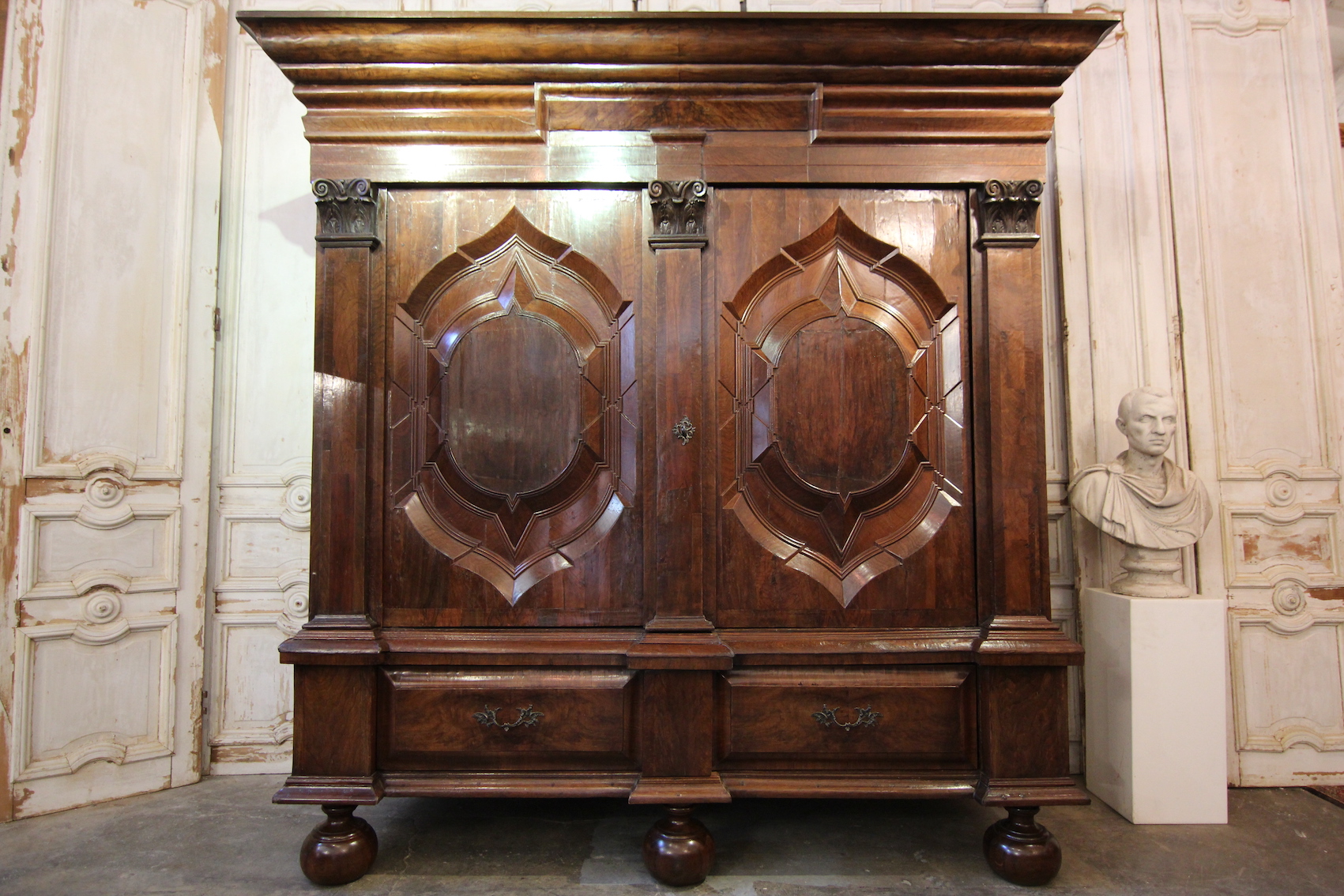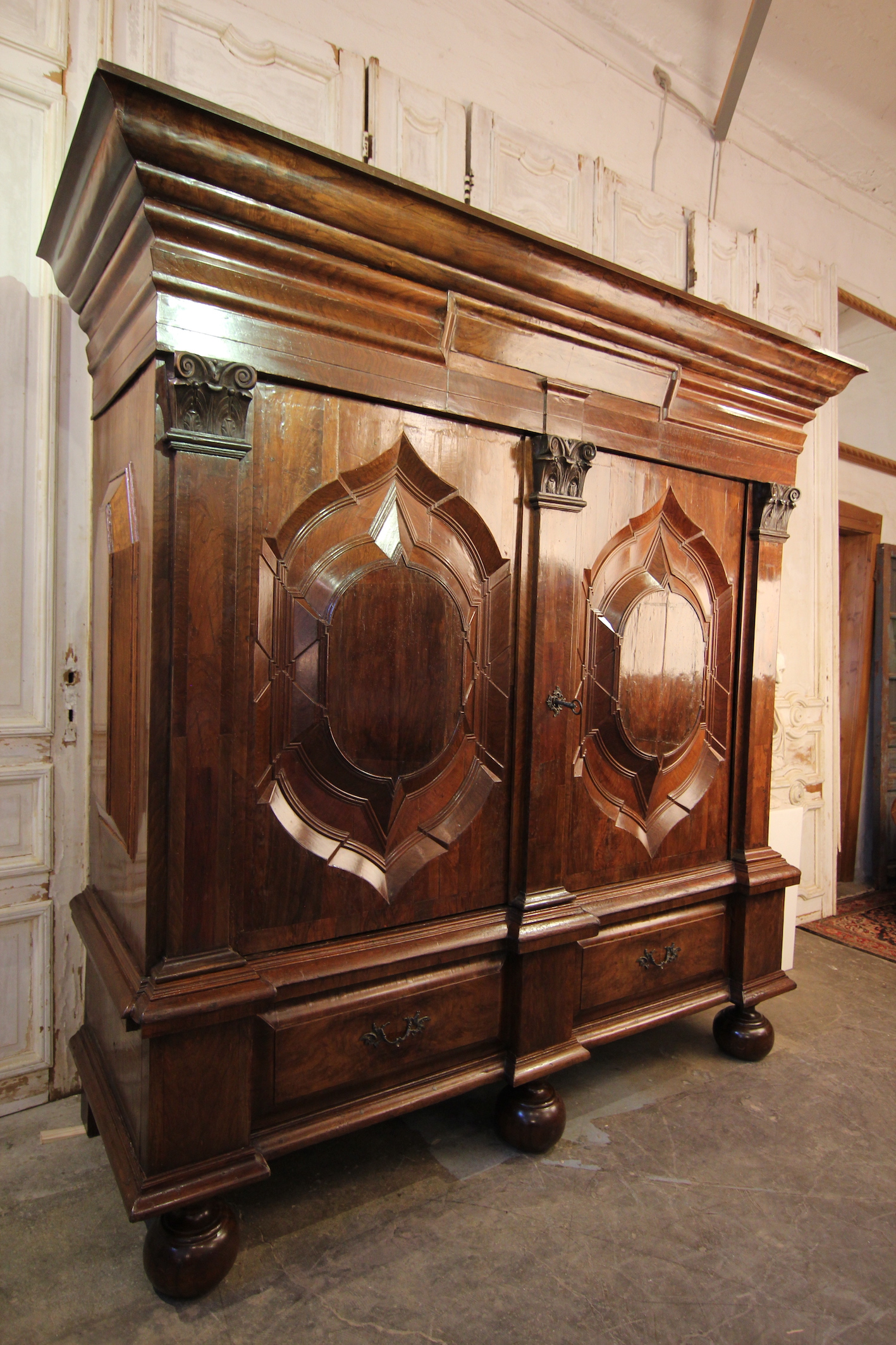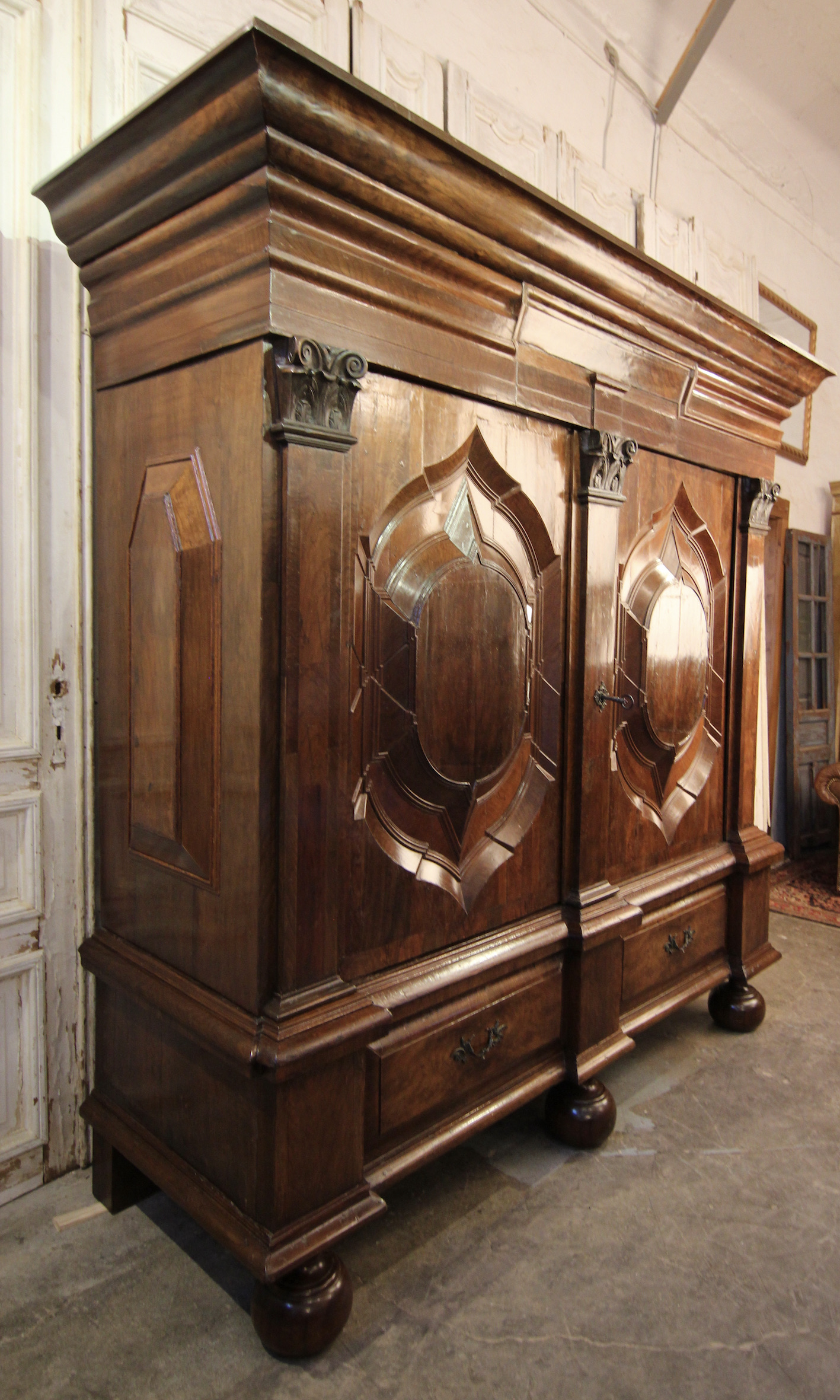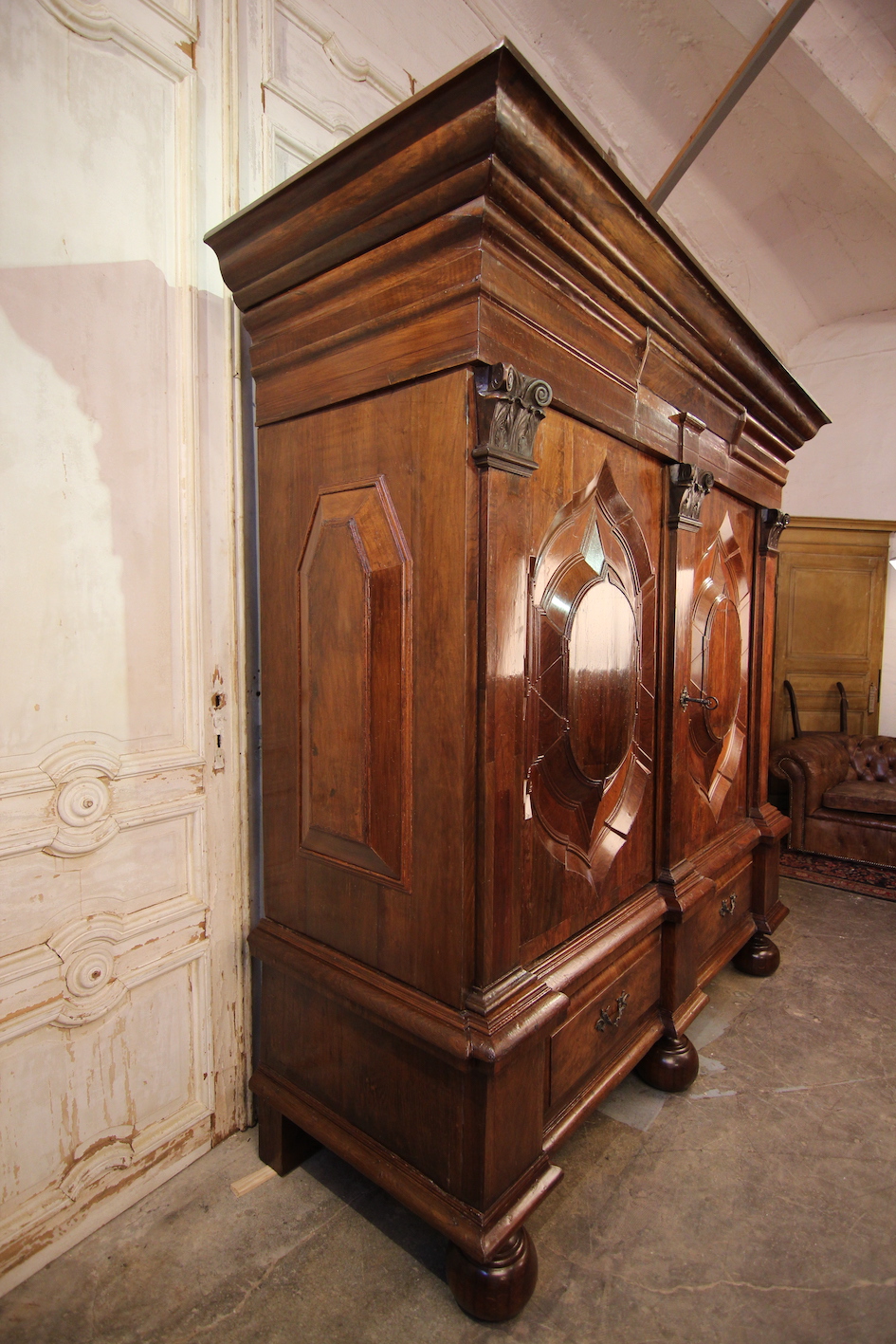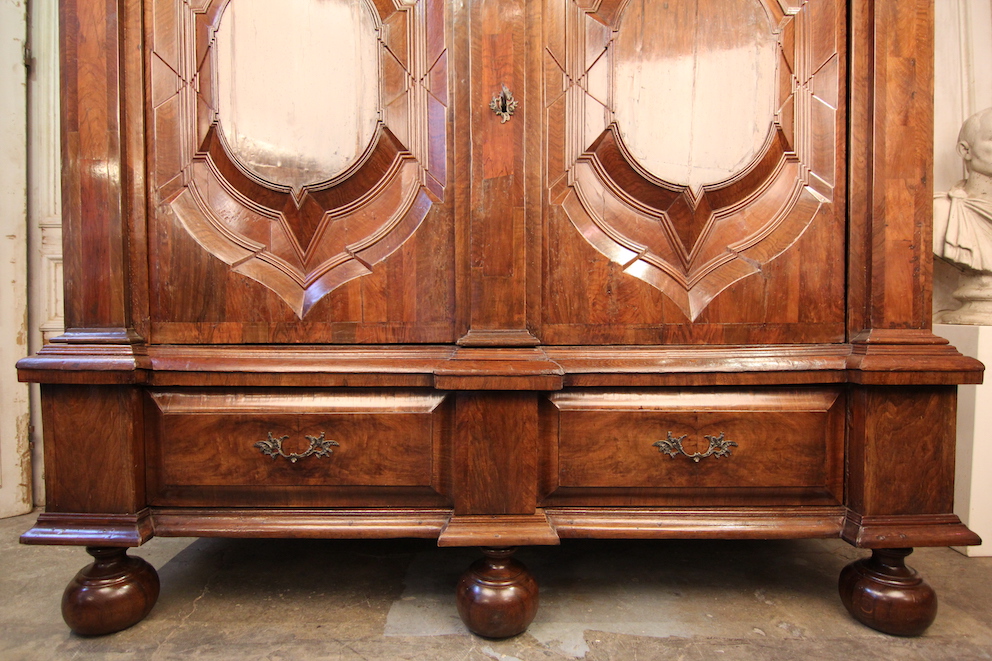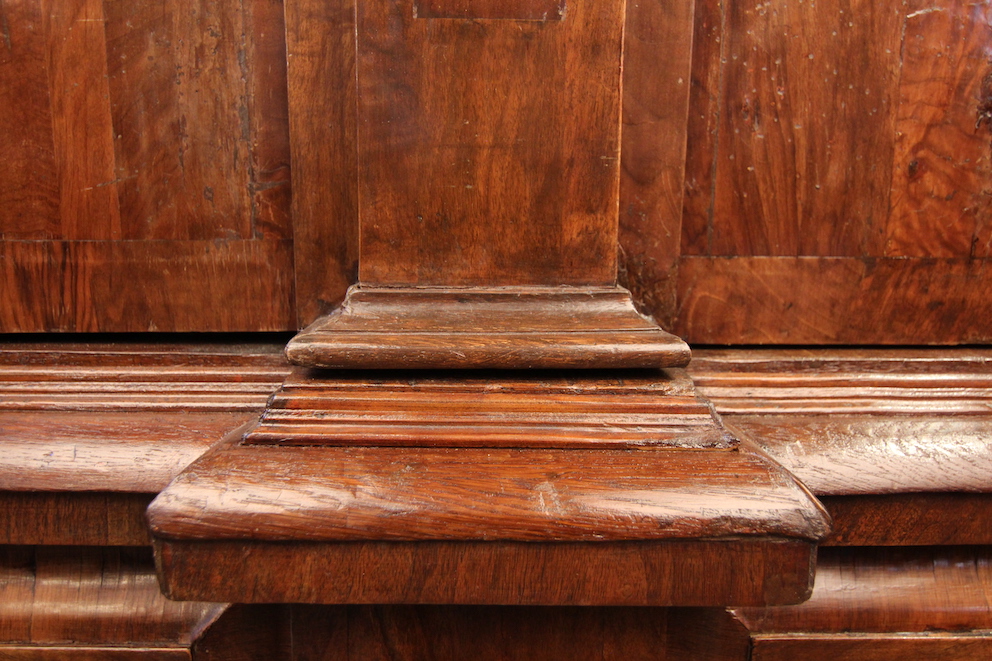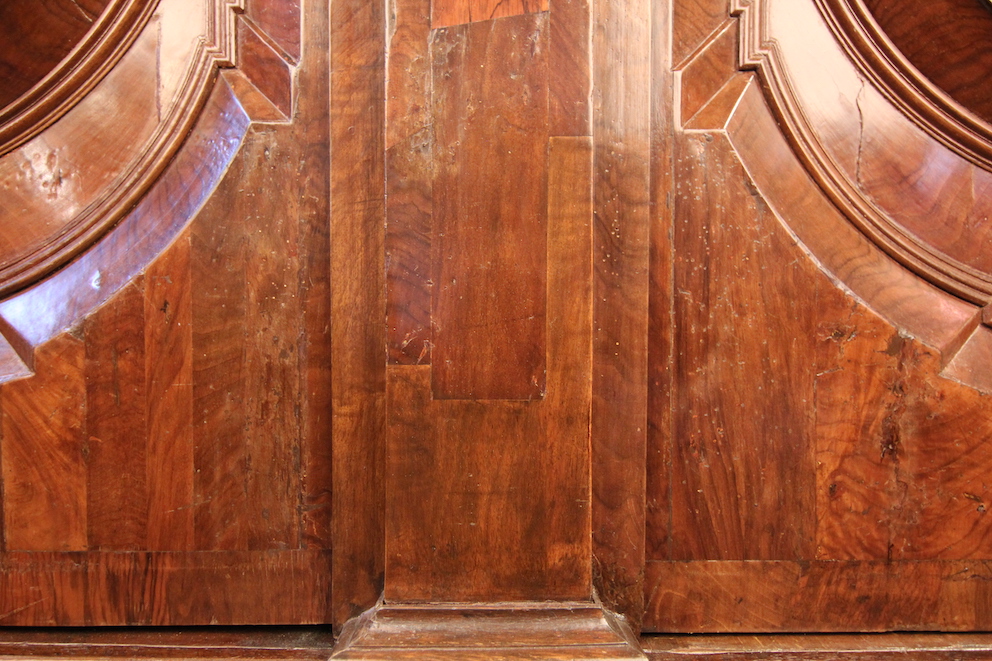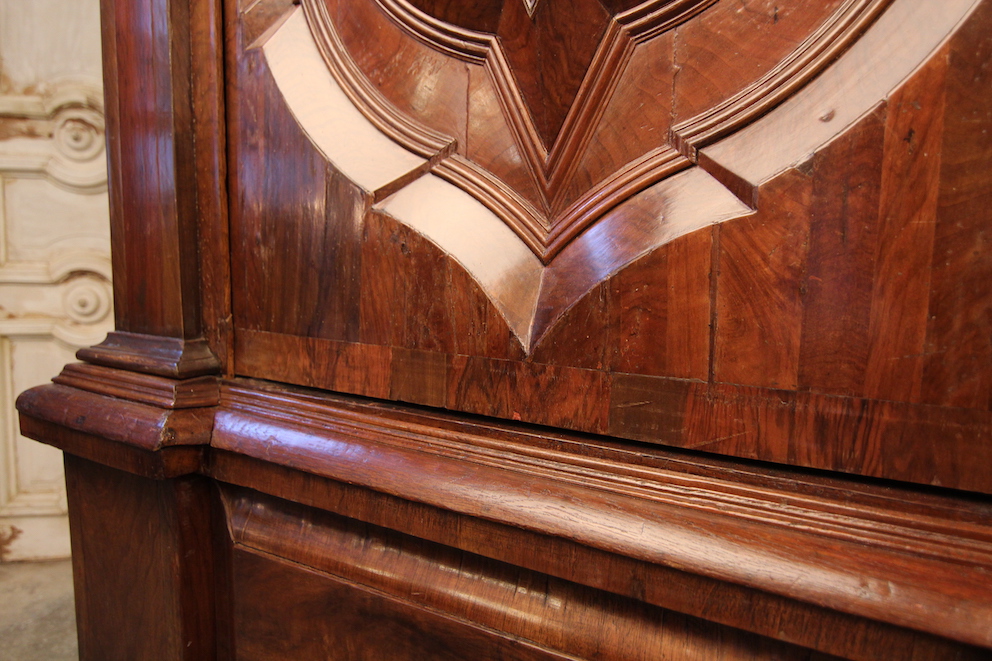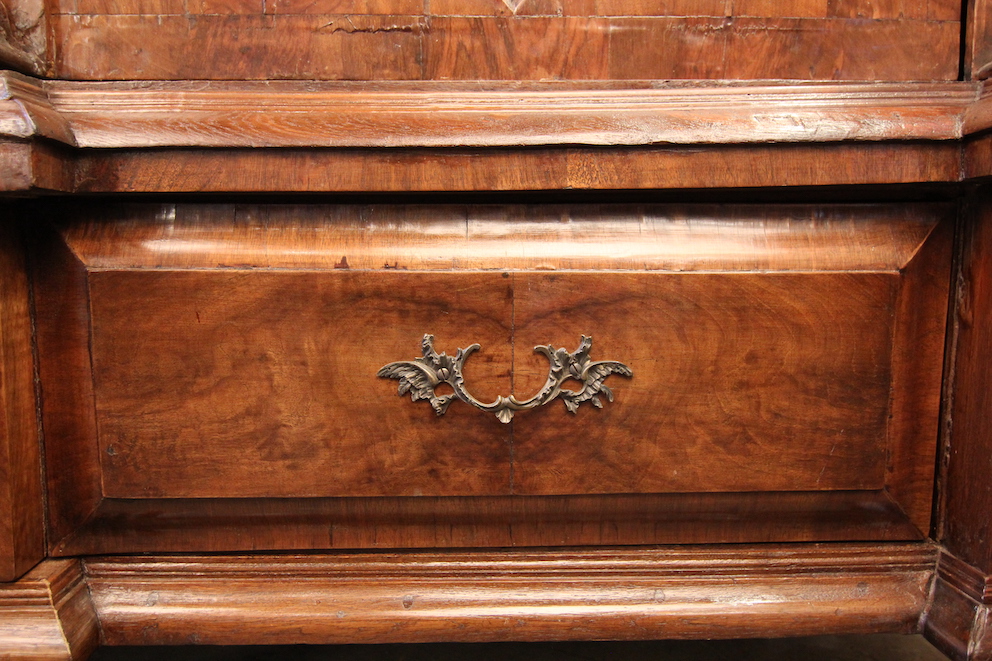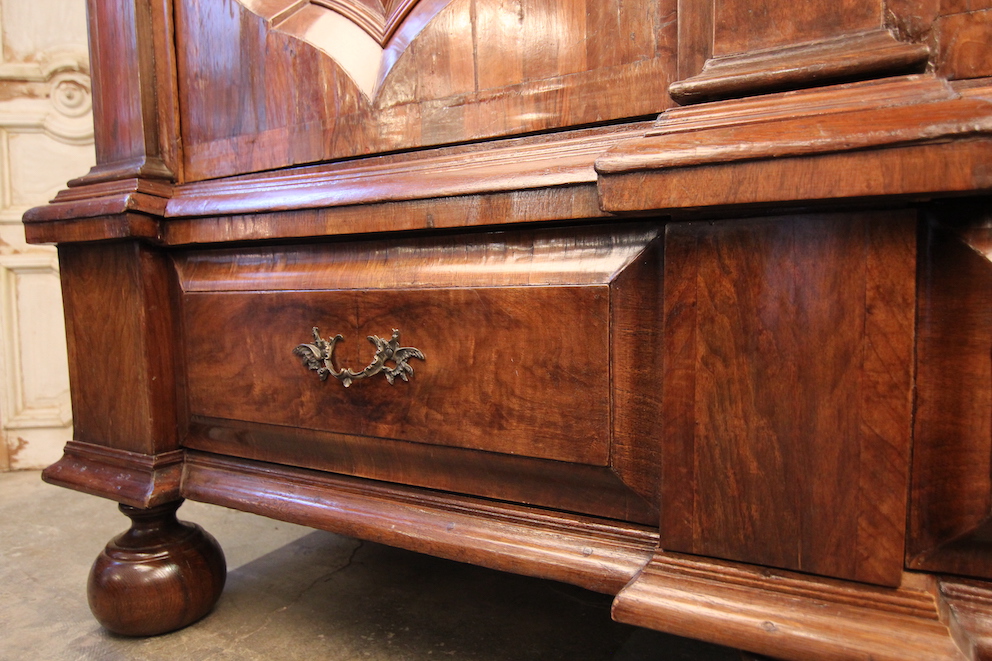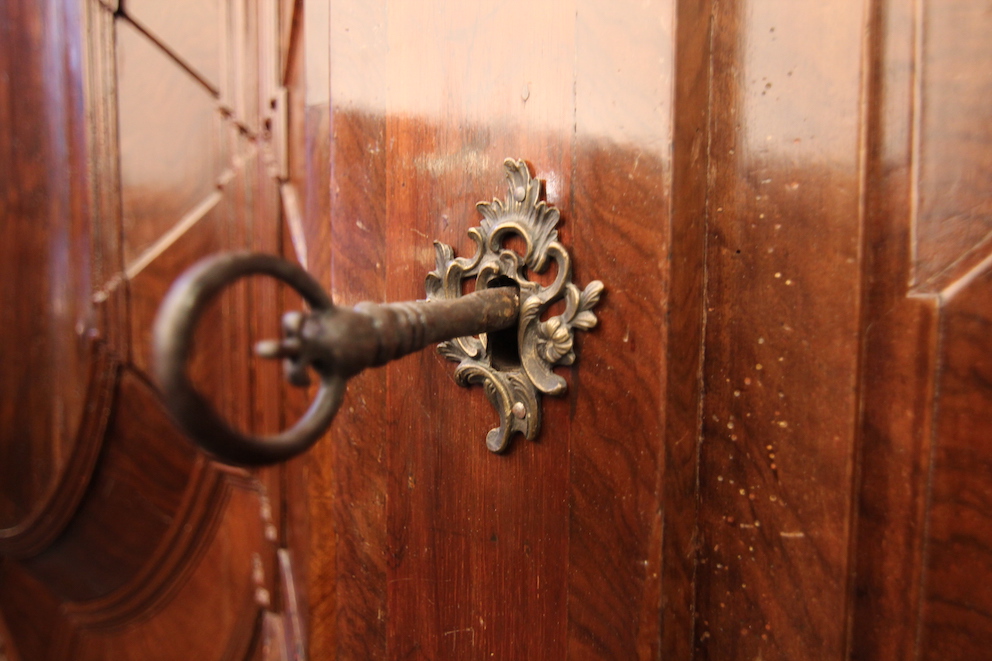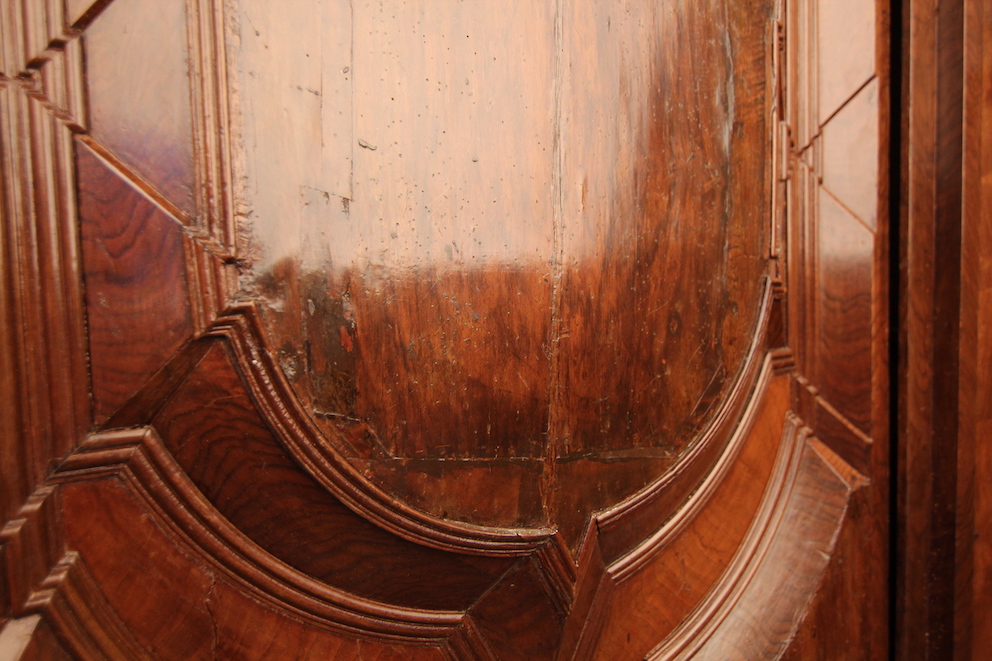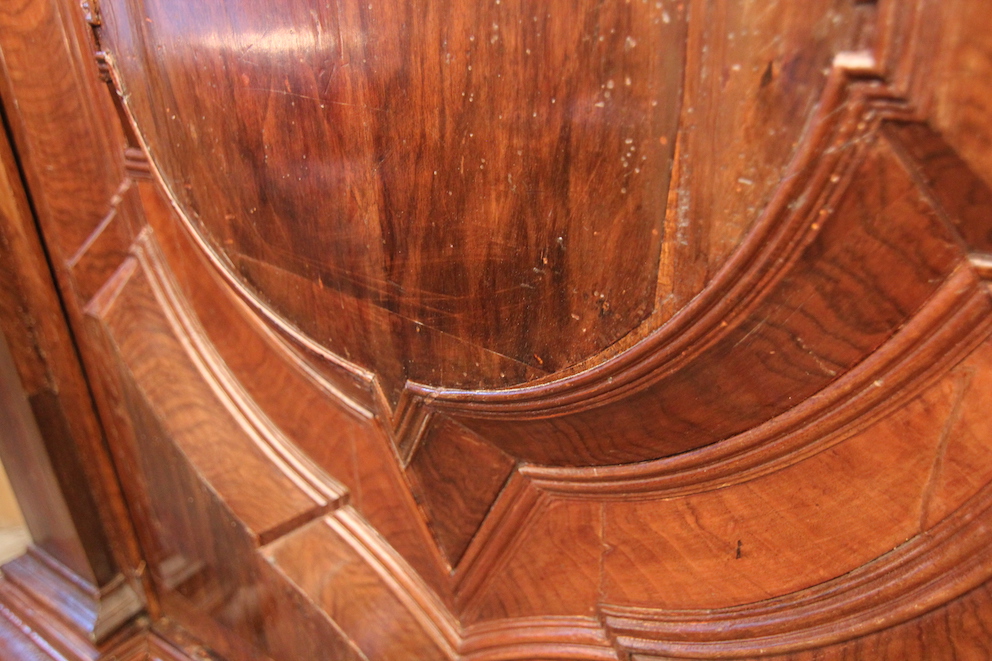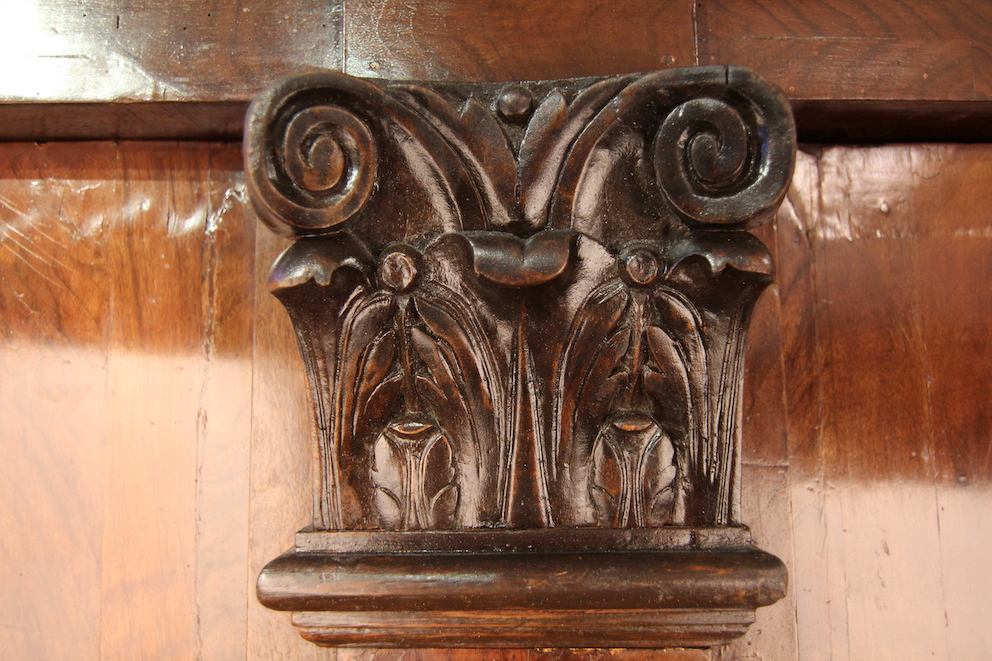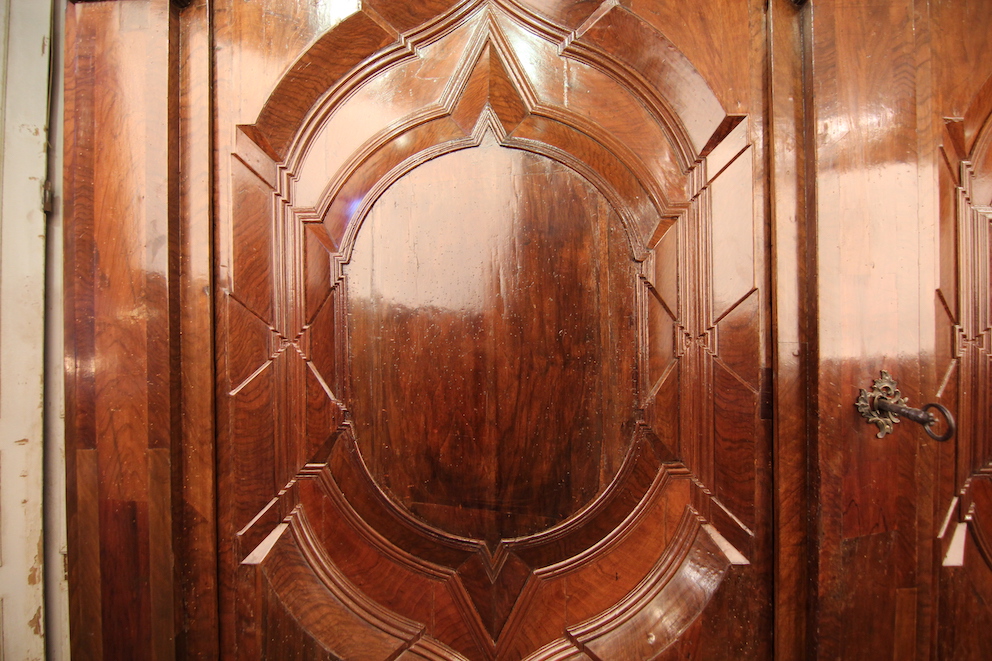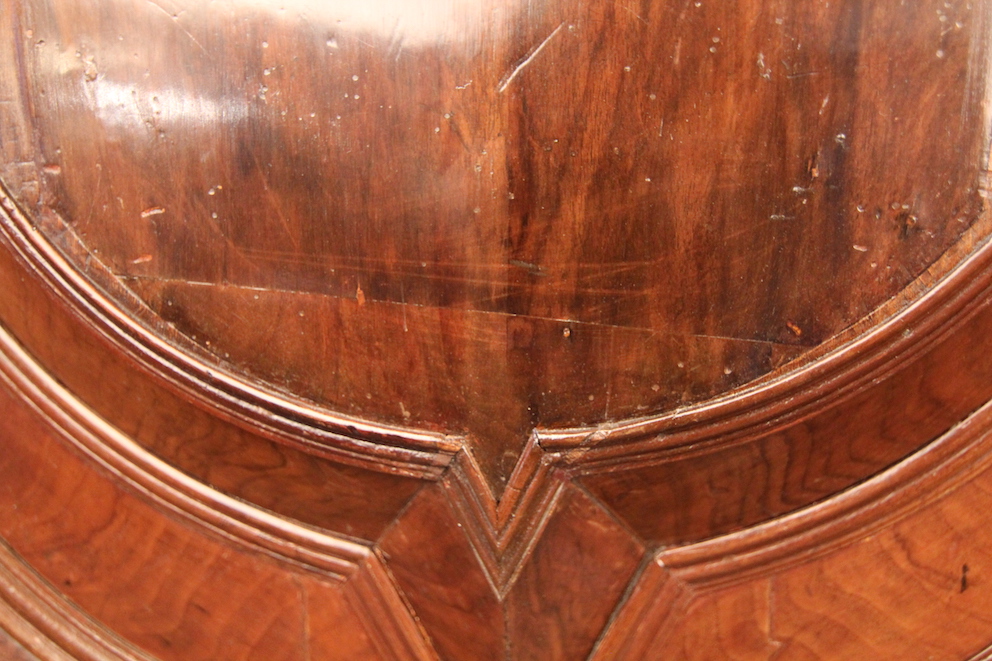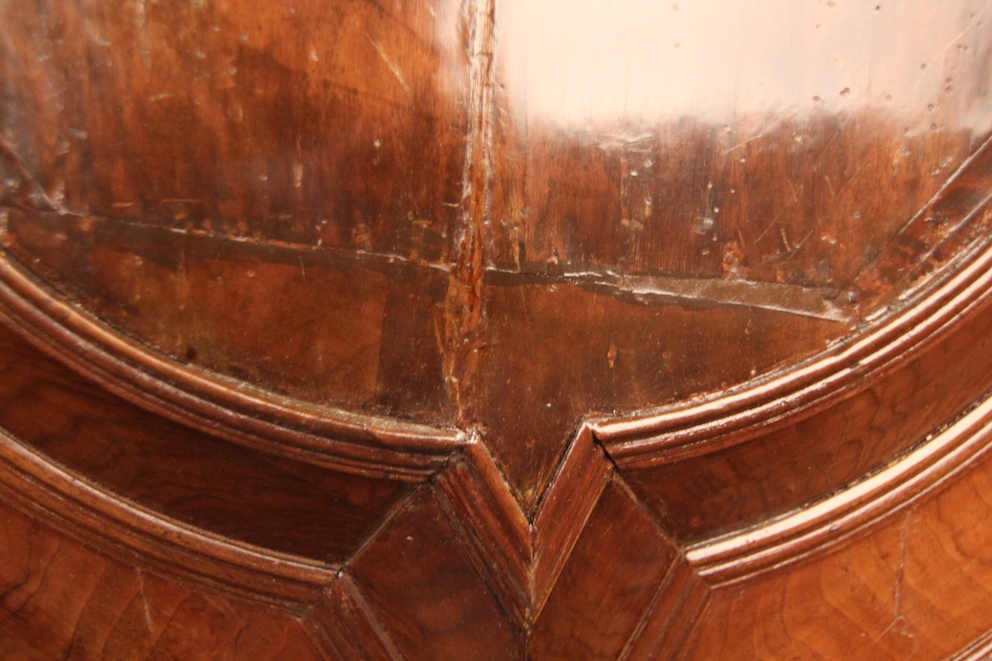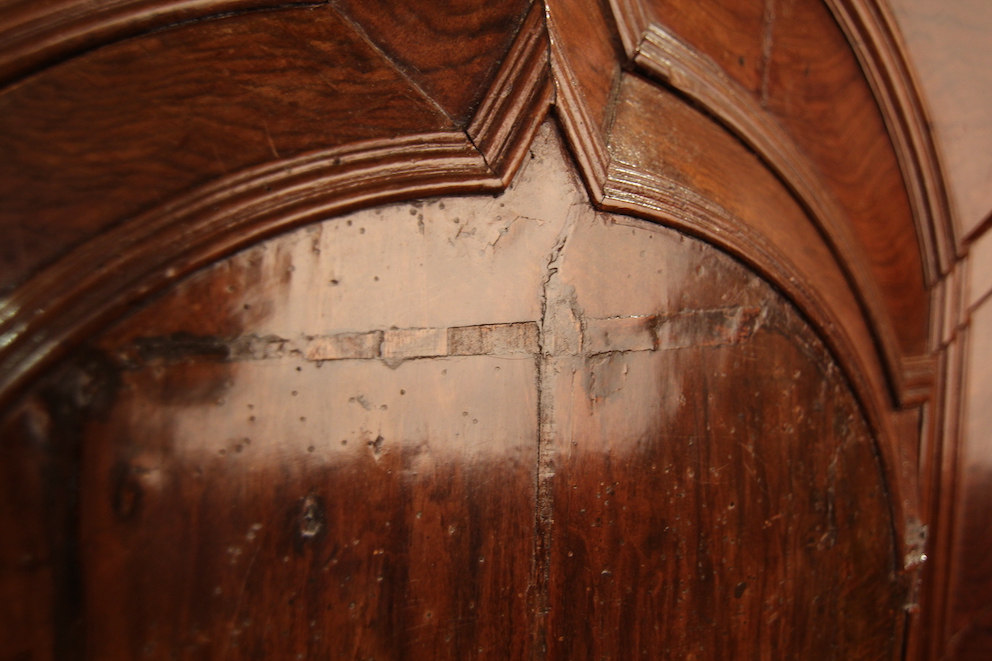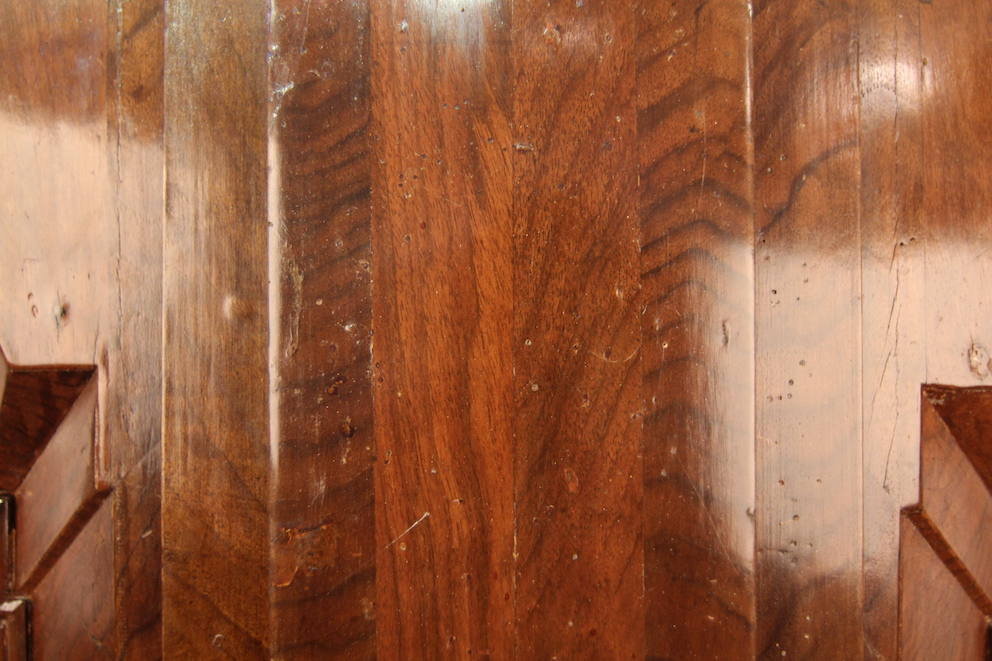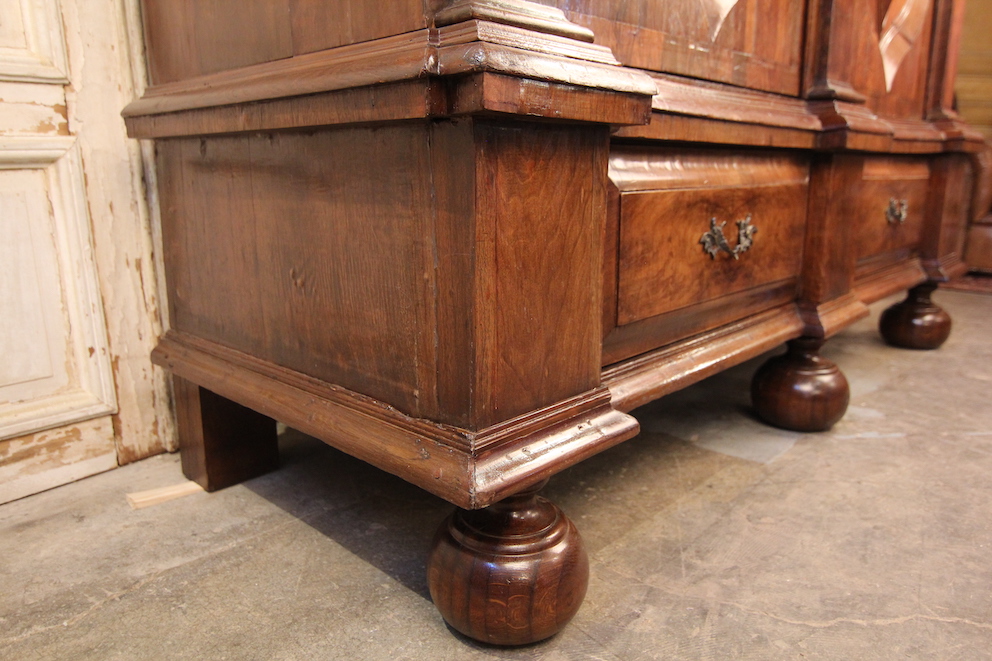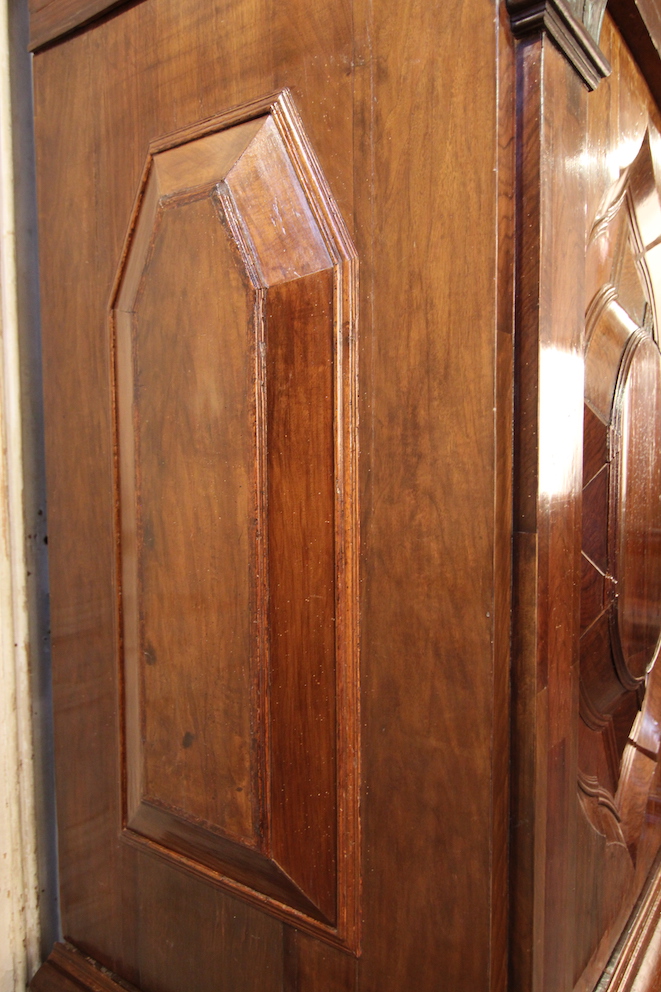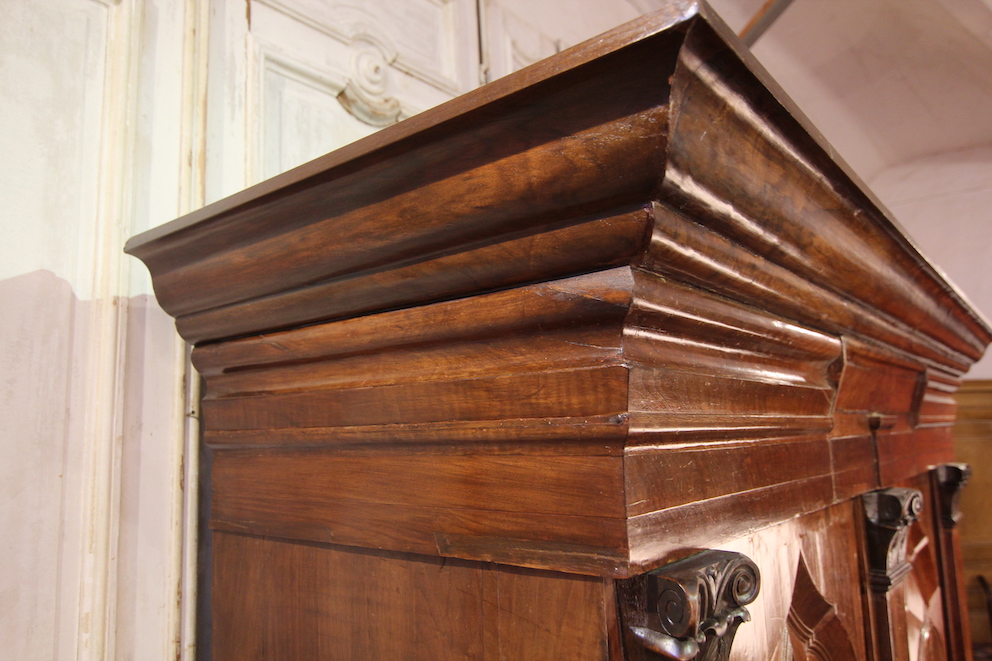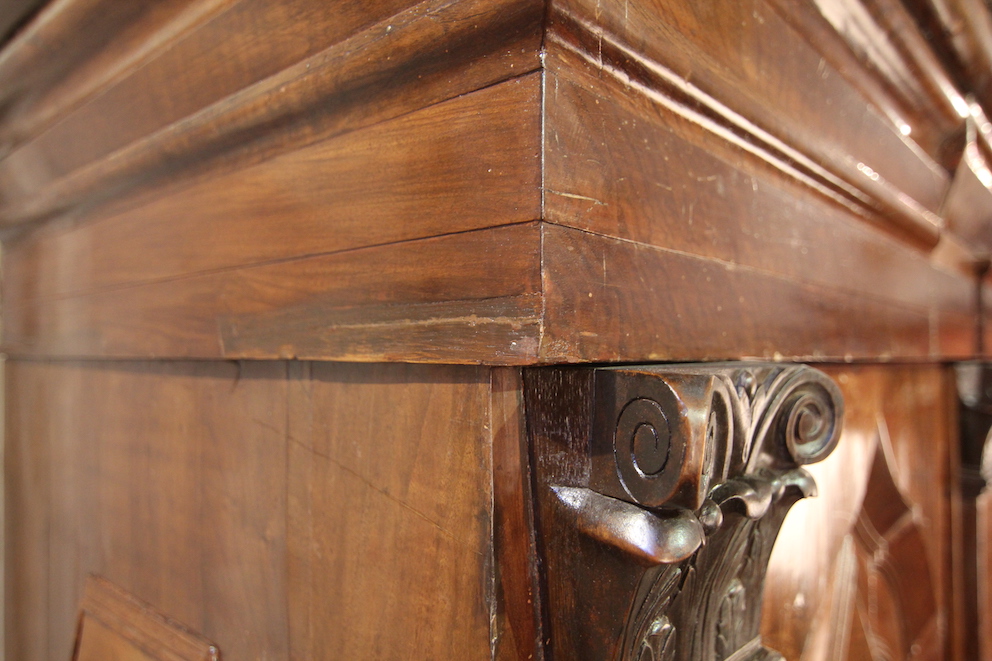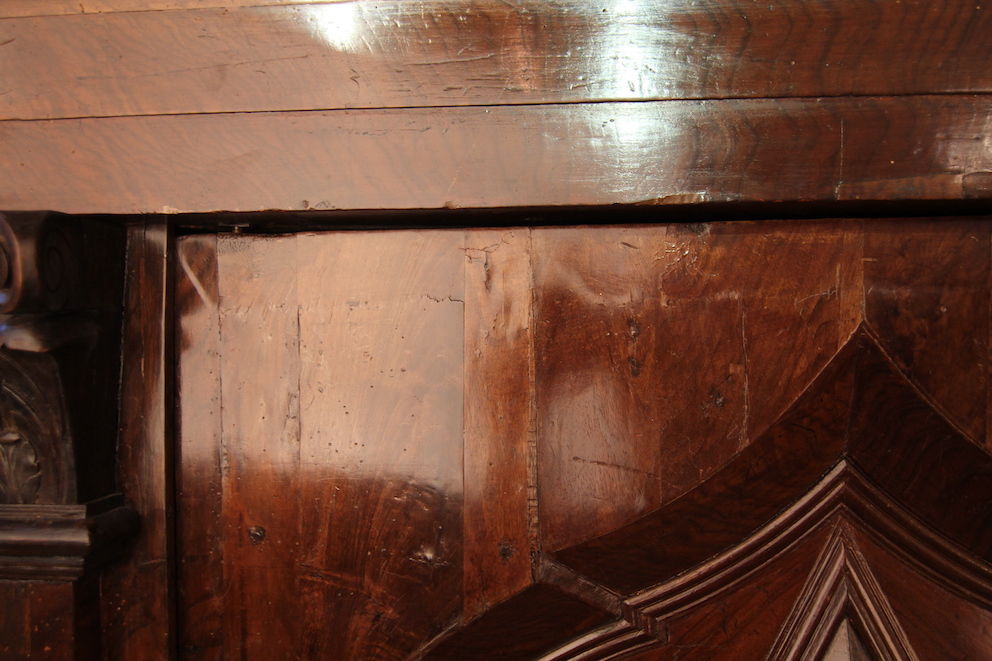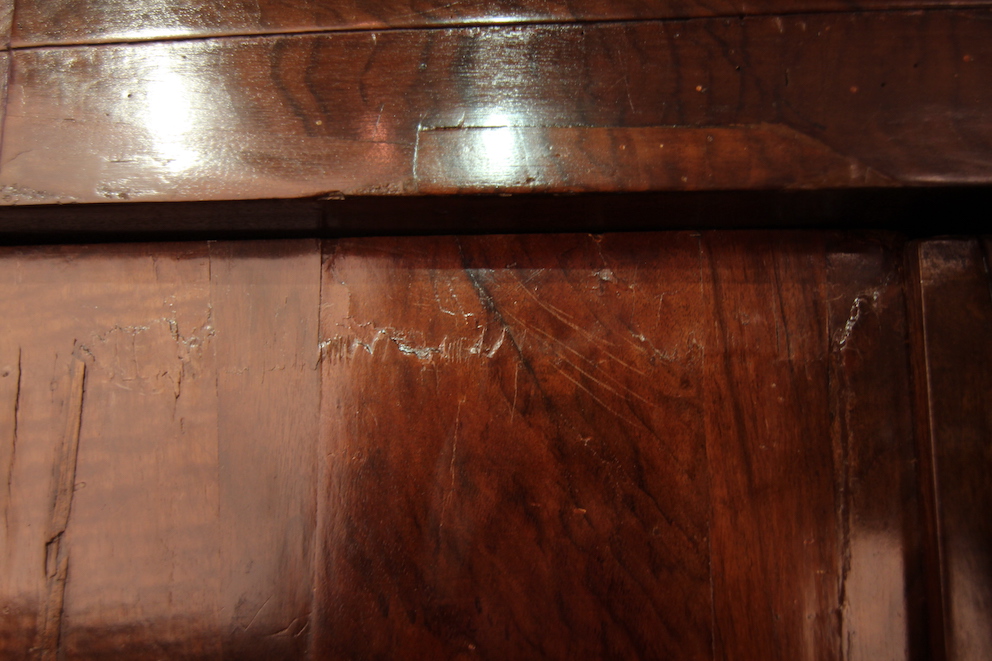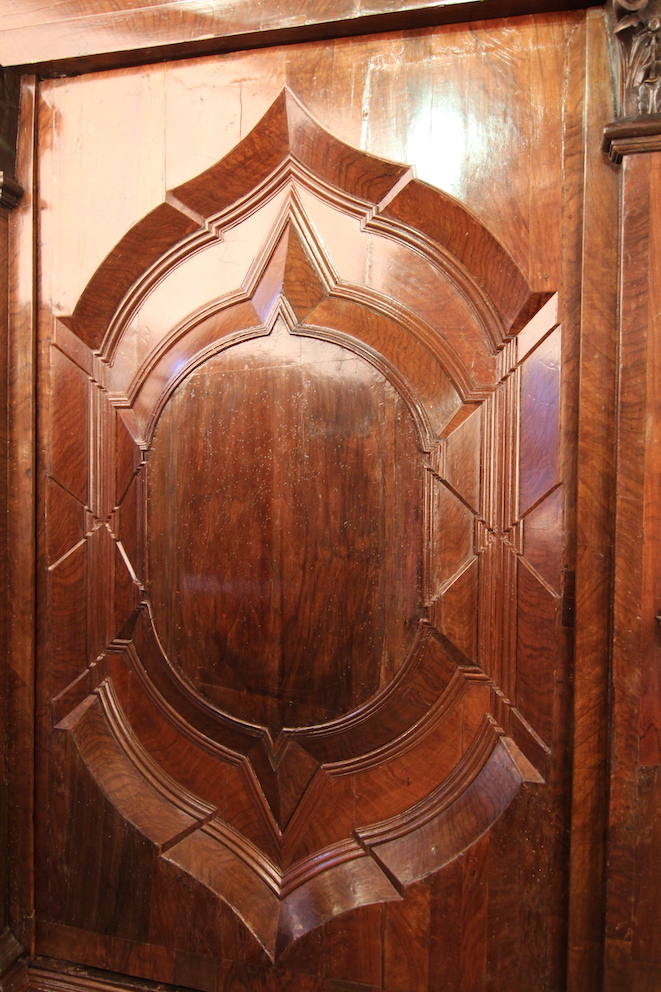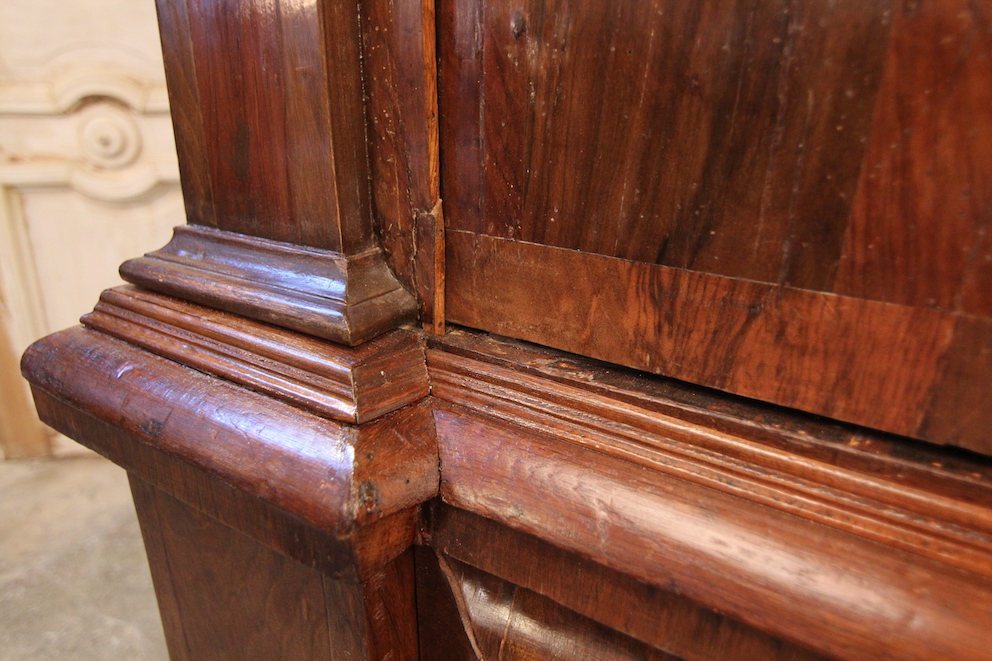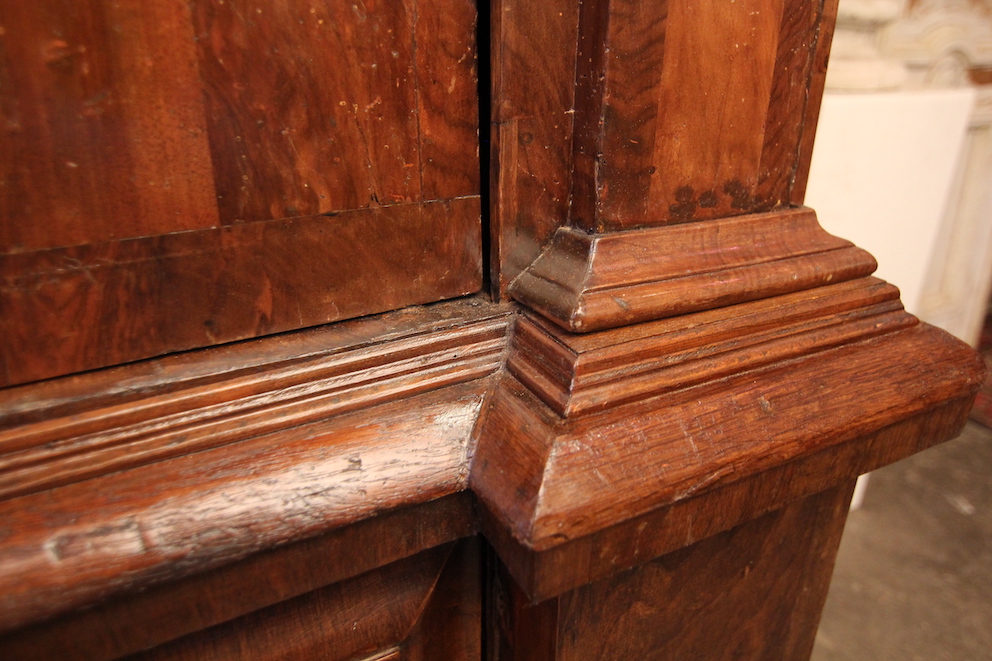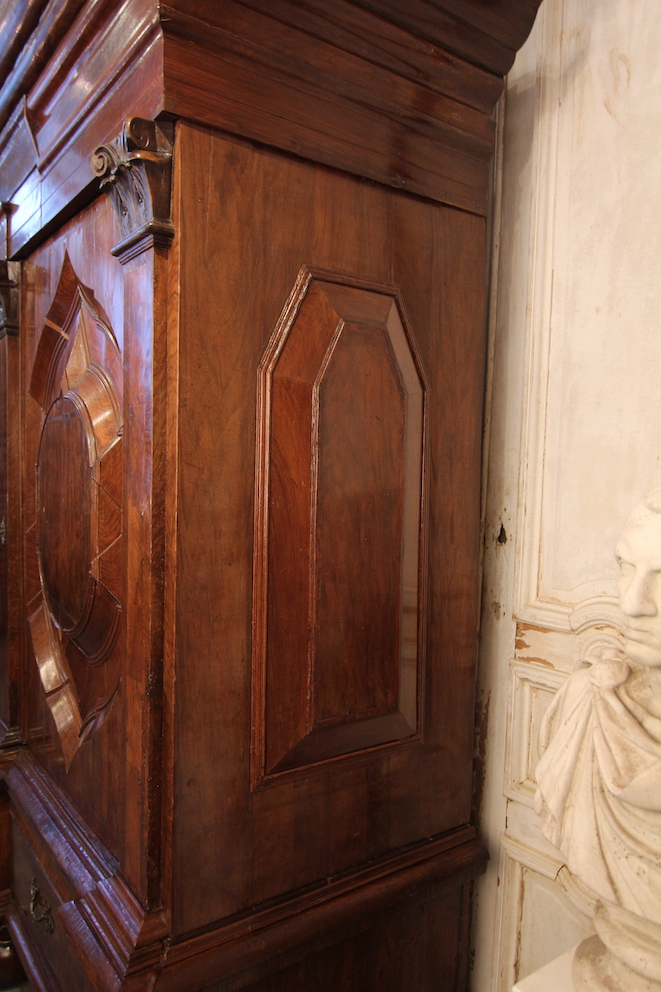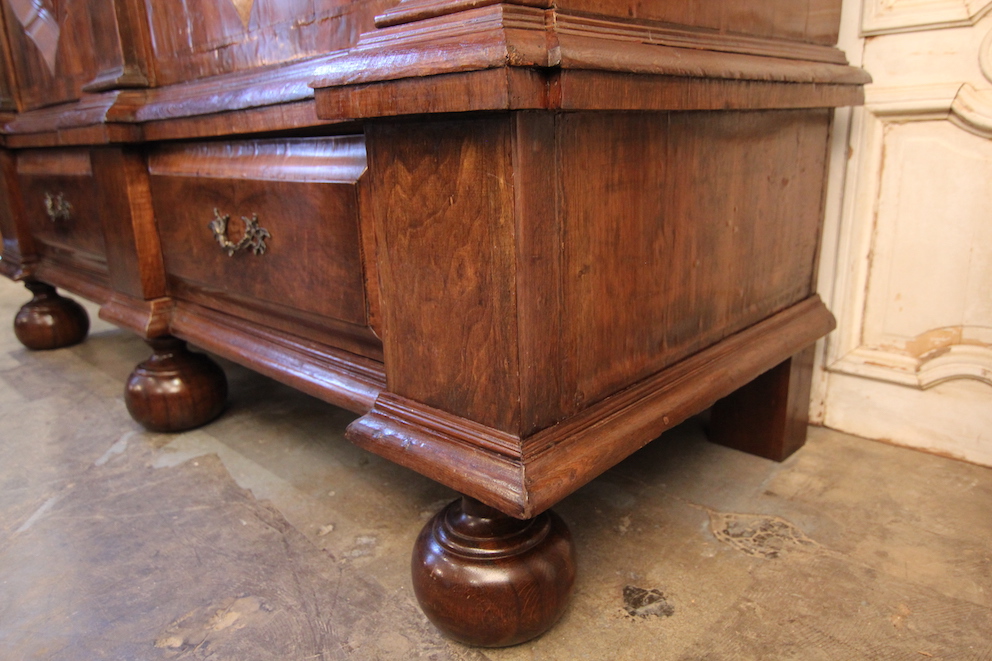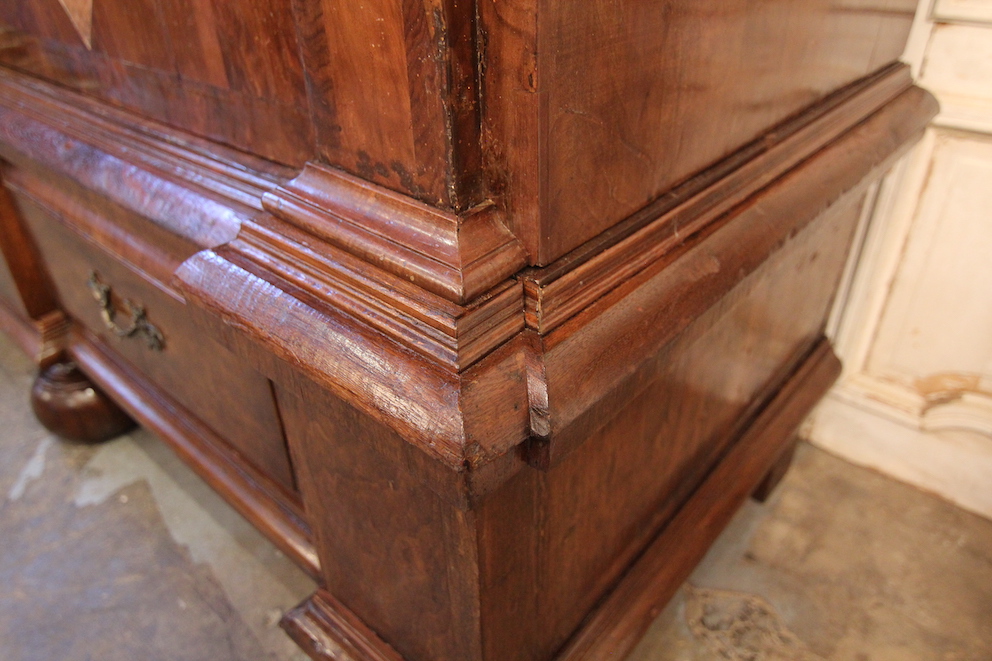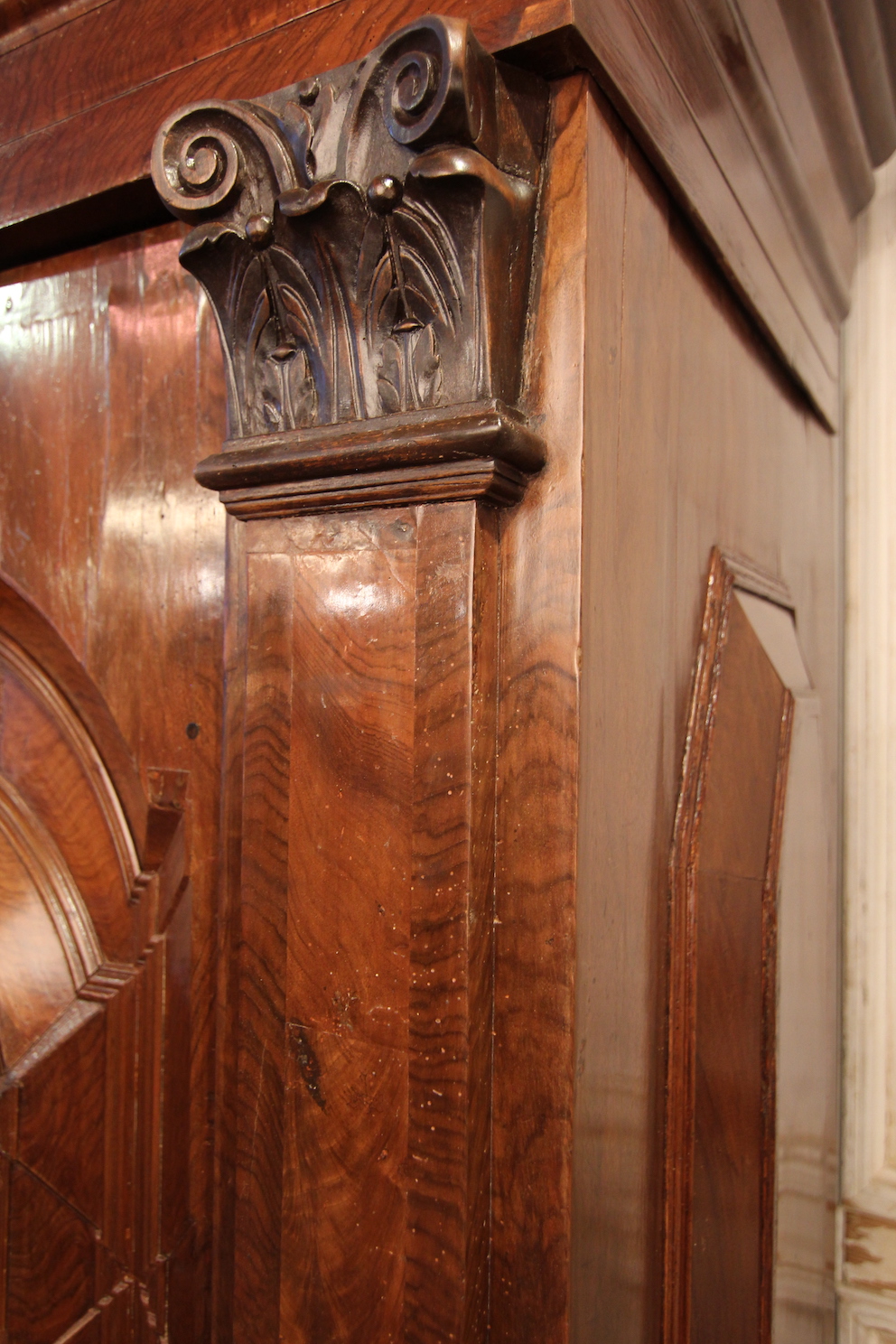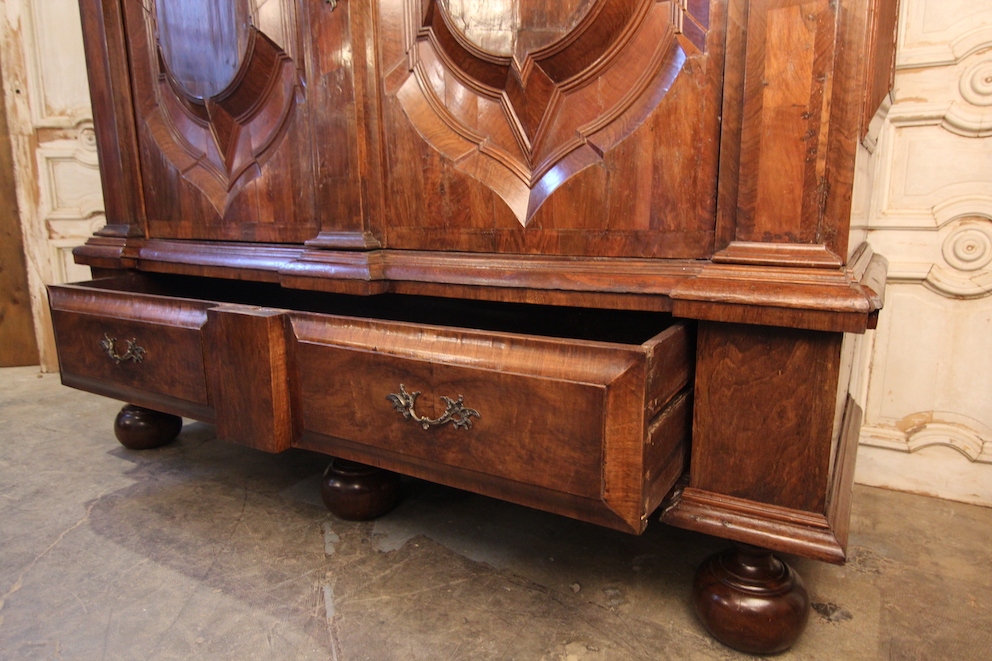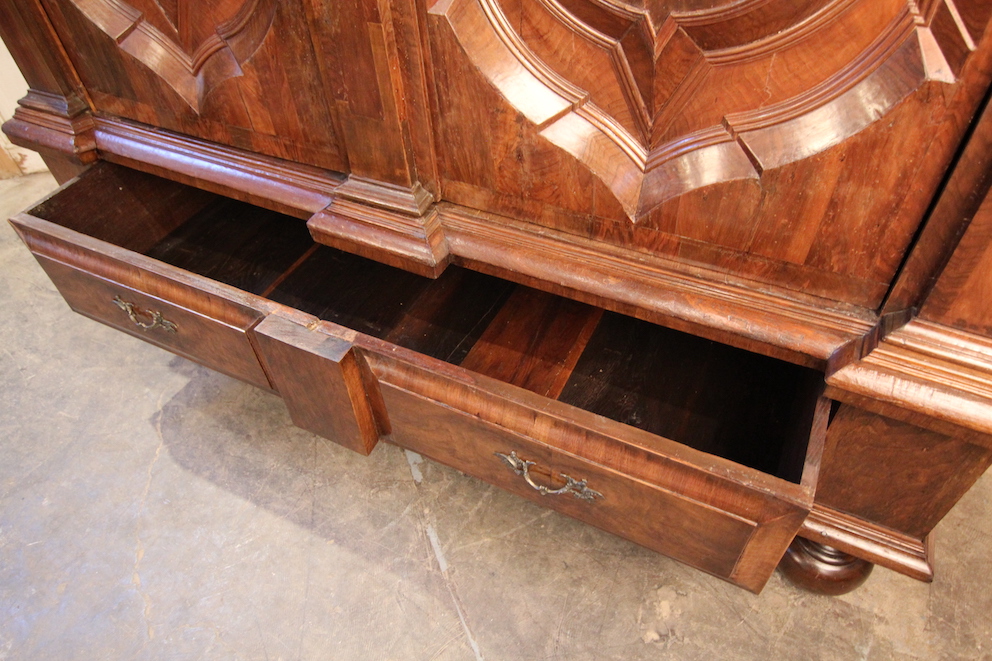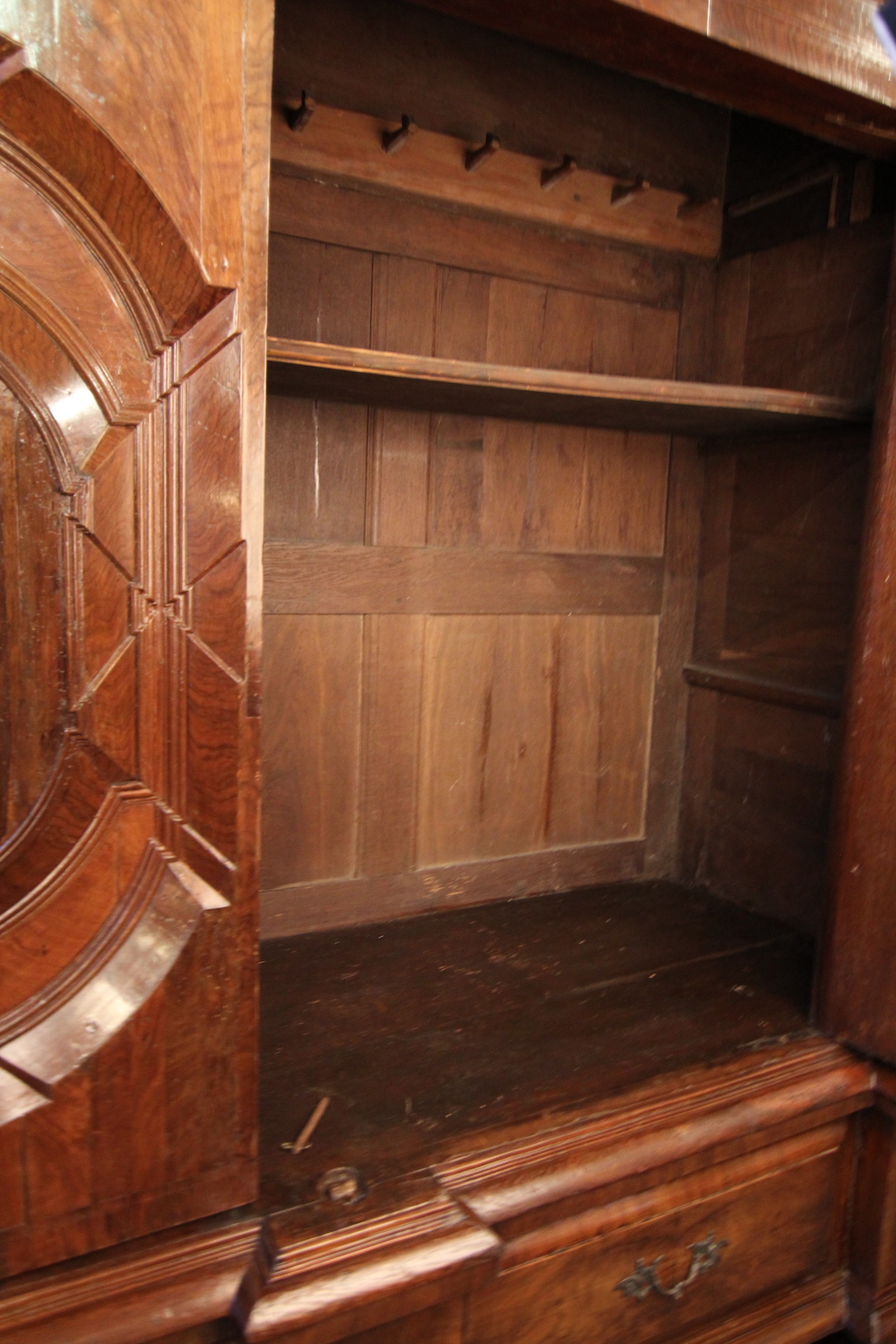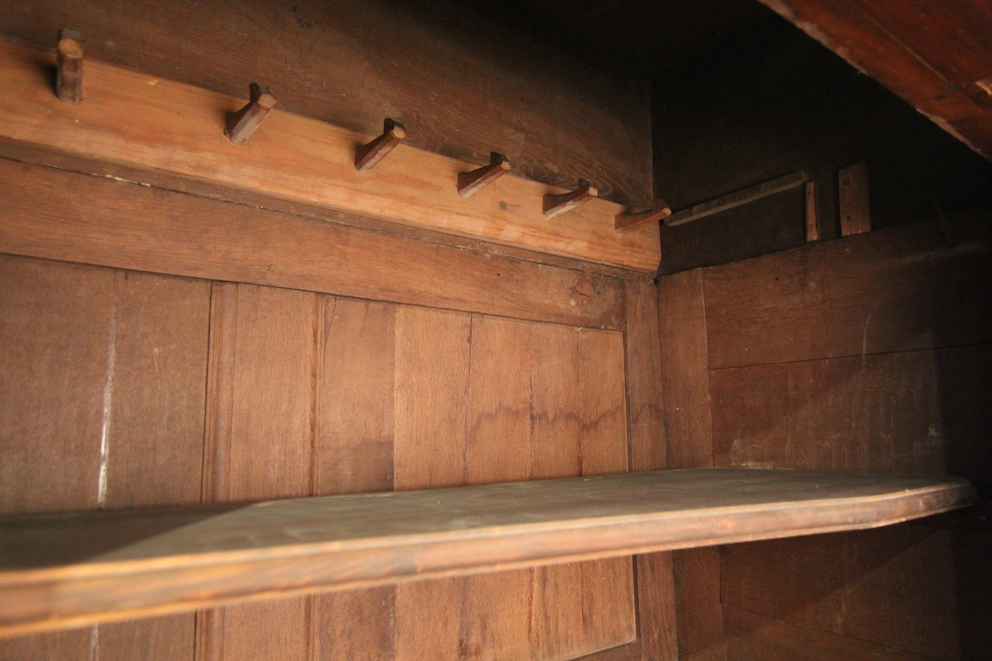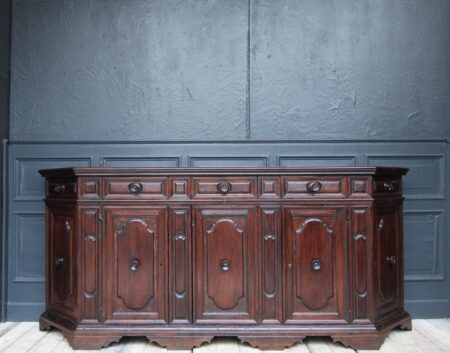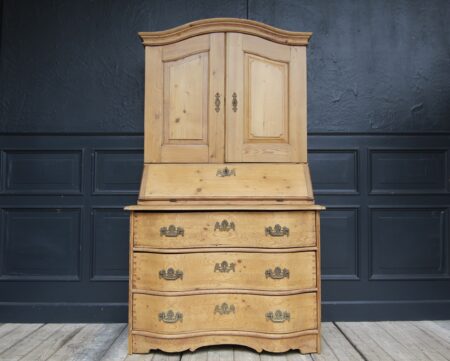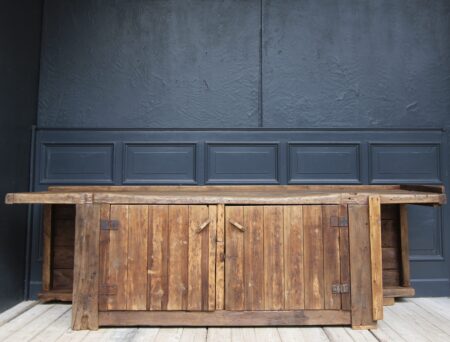Beschreibung
A 18th century “Hamburg Schapp”. Walnut veneered on oak.
In the second half of the 18th century, the first “Schapp” were created in northern Germany for the entryways of wealthy merchants and burghers. The new design medium of the so-called “cushions”, which originated in Holland, as panels on doors, carcase sides and drawer fronts, became established in the Hanseatic area and then also in the entire German territory. The Schapp gained increasing popularity in the late 17th or early 18th century and took the place of the bridal chest. The Hamburg Schapp model became particularly well known, but also those from Lübeck and Danzig. For the first time, a local type of cabinet was also adopted in other regions while retaining its name.
Dismountable two-door corpus. At the front, a triple-cranked, profiled plinth box on ball feet with a large drawer divided by a central risalit and 2 indicated false drawers. The central section is divided by three Corinthian pilasters with carved capitals ending below the cornice. Two doors with longitudinal oval “cushion” panels with multiple mouldings and tapered edges. Protruding moulded cornice. Possibly missing carved centre cartouche. “Cushion” panels also on the sides of the carcase.
Original lock and key. Newer fittings. Added shelf inside. By arrangement, the wardrobe can be fitted with additional shelves, a clothes rail or a divided set consisting of shelves and clothes rail, according to your wishes.
Old worming present (see pictures), but nothing active.
Dimensions:
232 cm high / 91.3 inch high,
220 cm or 240 cm wide / 86.6 inch or 94.5 inch wide,
70 cm or 85 cm deep / 27.6 inch or 33.5 inch deep.
Interior dimensions:
163 cm high / 64.2 inch high,
200 cm wide / 78.7 inch wide,
59 cm deep / 23.2 inch deep.
Restored condition ready for everyday using. The following restoration work has been done: Veneer additions and gluing down of loosened veneers on all sides. Chipping out of drying cracks and application of veneers. Addition of two profile mouldings. Drying crack in the base board of the plinth patched out, retouched and warped base board straightened. Running function of the drawer restored. All bottom boards of the drawer newly doweled. Drawer front newly glued. Plinth largely disassembled at the bottom and constructively glued again. Plinth feet newly doweled and glued again. Cleaning of all surfaces. Putty work on all surfaces. Retouching work on all surfaces. Surface finishing with shellac.
Comparable models can also be found in museums, such as the Kulturhistorisches Museum Stralsund.
Literature:
Dobler, Uwe: Barockmöbel. Bürgerliche Möbel aus zwei Jahrhunderten, Augsburg 1992, S. 93.
Schatt, Christian: Barock- und Rokoko-Möbel. Mobiliar aus Bürgerhäusern und Herrensitzen des 17. und 18. Jahrhunderts, München 2000, S. 45-48.
Schwarze, Wolfgang: Antike Deutsche Möbel. Bürgerliche und rustikale Möbel in Deutschland von 1700-1840, Wuppertal 1975, S. 14.
Please contact us by email at kgmarx@t-online.de. We will be happy to submit you an attractive offer incl. transport.

